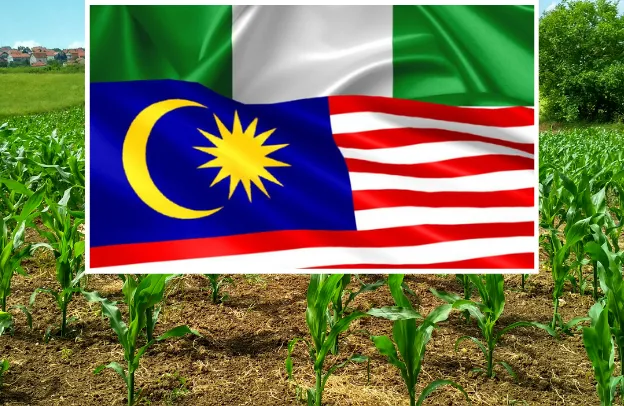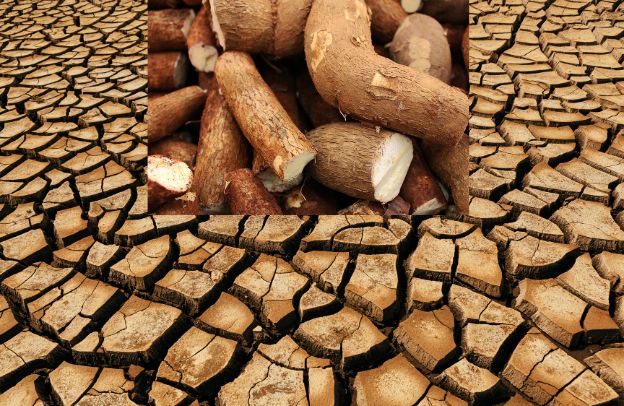A Comparative Study of the Agriculture Sector Contribution to the Economic Growth of Nigeria and Malaysia

Dr. Ikechi Agbugba | Contributor on Agribusiness Topics
Written by Dr. Ikechi Agbugba and Binaebi, Ebitari Department of Agricultural and Applied Economics PMB 5080, Rivers State University, Port Harcourt, Nigeria.
Abstract: This study compared the agriculture sector’s contributions to the economic growth of Nigeria and Malaysia, specifically in the areas of GDP, foreign exchange, employment, and food security. Secondary data was collected from the Food and Agriculture Organization (FAO) yearbooks and a paired sample T-test was used to compare the means of the data obtained for both countries.
Want to learn more about storytelling? Start by downloading the first chapter of The Storytelling Mastery.
Results indicated that Nigeria’s agriculture has contributed more to her total GDP by a mean of 18.30%, compared to that of Malaysia (8.09%). For foreign exchange, Malaysia’s agriculture sector contributed more (12.14%) exports compared to that of Nigeria (1.79%). For employment, Nigeria’s agriculture sector contributed more (32.00%) compared to that of Malaysia, which is higher (18.54%).
Regarding food security, Malaysia’s agriculture has contributed more (1.25%) of undernourished persons compared to that of Nigeria (12.35%). The study concluded that in the areas of GDP and employment, the Nigerian agricultural sector contributed more to Malaysia’s economic growth.
More so, in the areas of foreign exchange and food security, Nigeria’s agriculture sector contributed less to economic growth compared to that of Malaysia indicating that Nigeria’s agriculture sector has not performed poorly compared to Malaysia. The study, therefore, recommended an increase in agricultural production and export for Nigeria.
Keywords: Economic growth, agriculture sector, GDP, GNP, Nigeria, Malaysia
Introduction
A substantial goal of impoverished countries is economic development anchored on economic growth.
Economic growth refers to increases in a country’s production or income per capita while economic development refers to the enjoyment of such growth by the majority of the citizens. Such enjoyment may take the form of improvements in the material well-being of the poorer half of the population; a decrease in agriculture’s contribution to GNP and a corresponding increase in the contribution of industry and services to GNP; an increase in the education and skills of the labor force; and substantial technical advancements emanating from within the country (Wayne, 2006).
The Nigerian Agricultural sector affects the economic growth and development process. This it done by providing food and fiber for domestic consumption and human labor to the industrial sector. It also generates foreign exchange through the export of agricultural products, increasing domestic savings and the purchasing power of rural people (Poonyth et al., 2001).
In the 1960s, agriculture contributed over 80 percent of the export earnings and employment in the economy; about 65 percent of the GDP (gross domestic product), and about 50 percent of the government revenue, despite the dependence of most Nigerian farmers on traditional tools and indigenous farming methods (Lawal, 1997, Federal Republic of Nigeria 2000; Akpan et al., 2012).
In order to become a developed nation, Nigeria needs to accelerate its economic growth by concentrating on important economic sectors like education, energy, agriculture, and manufacturing. At this point in Nigeria’s development, the best approach is to pay more attention to the agricultural sector. By focusing on agricultural development, Nigeria can speed up its economic growth in the coming decade (Omorogbe et al., 2014).
Currently, Nigeria has 75 percent of its land suitable for agriculture, but only 40% is cultivated. This shows that there is much room for expansion the country needs to look into. However, to progress, the country must increase the low productivity of current agricultural companies, engage competition within the agricultural sector, develop domestic policies, and increase funding (Ayodele et al., 2013).
In South East Asia, rising profits from improved and fast-growing agricultural production raised millions of people out of poverty and provided the framework for diversified economic growth. The current Malaysian economy is anchored on three main sectors.
These are manufacturing, services, and agriculture. During the 1970s or probably even earlier, the Malaysian economy was totally dependent on agriculture. Malaysia was well known for the exports of rubber, tin, palm oil, and to some extent, cocoa. Agriculture with a 29.1% contribution to the GDP was the largest single sector. The economic metamorphosis, which occurred over the years, reduced the contribution of agriculture to the GDP to only 9.64 percent from 1995 to 1998 (Jalani et al., 2000).
The agricultural sector is the third most important sector in the Malaysian economy to date. The agricultural sector has been the spine of the Malaysian economy for a very long period of time. During independence, it contributed 39.3 percent to the Gross Domestic Product (GDP), generated 58.3 percent of the total employment, and about 50.0 percent to export earnings.
After independence, when the economy experienced diversification, the contribution of the sector diminished. However, in 1980 it still contributed 22.9 percent of total GDP, 39.7 percent to employment, and less than 25 percent to export earnings (World Bank, 2014).
In the year 1990, the sector contributed 18.7 percent to total GDP, 26.0 percent to total employment, and 22.2 percent to export earnings. The figures were reduced further for 1995 and 2000. However, in the year 2000, despite the decrease, the sector still contributed 10.5 percent to GDP, 13.0 percent to employment, and 7.2 percent to export earnings.
Nigeria and Malaysia share common historical antecedents. They gained their independence from the British rule (Tiku and Bullem, 2015). The federal system of government is practiced with bicameral legislature and the regions are inhabited by different racial and ethnic nationalities. Both economies were relatively resource-rich.
At independence, Malaysia in 1957 and Nigeria in 1960 were leading exporters of primary products because basically the climate in the countries is tropical. A comparison of Malaysia’s and Nigeria’s growth records shows divergence in growth rates and differing structural changes to the economy. Malaysia, on the average, has grown at a faster rate than Nigeria (Kareem, 2015).
Agriculture’s share of GDP in 2009 has fallen to 7.7 from 33.6% in 1970, compared to Nigeria’s 55.8% in 1970 and 40.3 percent in 2009. Manufacturing in Malaysia accounted for 12.8% in 1970 and 26.5% in 2009 compared to Nigeria’s 6.6% in 1970 and 15.5% in 2009, furthermore, the contribution of the service sector has increased to 57.4% in 2009, but in Nigeria, it stood at only 15.5% (World Bank, 2013).
Consequently, the two countries have adopted almost the same ideology in their developmental efforts.
While Malaysia’s development plans have move vigorously towards the attainment of its vision of becoming an advanced economy in 2020, its Nigerian equivalent, the Vision 2020 whose objective is to make Nigeria one of the 20 most industrialized economies by the year 2020, becomes a mirage (Tiku and Bullem, 2015).
From the above, Nigeria and Malaysia have similar histories, development planning patterns and climates. It is generally believed that Malaysia has outperformed Nigeria in agriculture. This study is to evaluate the above perception by the performance of their agricultural sectors.
Objectives of the Study
The broad objective of the study is to examine the comparative contribution of the agricultural sector to the economic growth of Nigeria and Malaysia. The specific objectives are: i.) To compare the contribution of agriculture to the GDP of the study area. ii.) To compare the contribution of agriculture to foreign exchange earnings. iii.) To compare the contribution of agriculture to employment status.
iv.) To compare the contribution of agriculture to the food security status, taking data for the population of undernourished people for Nigeria and Malaysia as proxy.
Theoretical Framework
According to Tolupe and Chinonso (2013), the importance of agriculture development in ensuring poverty reduction and economic growth hinges on the fact that 70% of the population is employed in the agriculture sector. The sector’s role of food production, provision of resources for other sectors, creation of viable market and domestic savings gives credence to its importance in economic growth.
In view of the existing controversy among development economists on the role of agriculture as a precondition for industrialization and economic growth, contributions of agriculture to economic growth were explored. Their study realized that economic growth does not impact on agriculture growth. This supports the notion that lack of investment in the sector may be responsible for the slow growth experienced in Nigerian agriculture.
The study therefore reaffirm that agriculture is an engine of economic growth in Nigeria and efforts should be made to add value to the sector through increased investment.
According to Olajide, Akinlabi and Tijani (2014), on the whole, the agricultural sector contributes
significantly to Nigeria’s GDP. The employment base of the Nigerian economy is largely dependent on this sector. The finding showed that the agricultural sector contributes more than 30 percent to the economy i.e. 34.4 percent.
As expected the agricultural sector contributes maximally to Nigerian economy more than 50 percent, but the low 34.4 percent is due to the neglect of agriculture when oil was discovered in a commercial quantity in the 1970s. It is well over due for the Nigerian economy to diversify. The negative perception and orientation of the average Nigerian about agriculture sector should be disabused so that these sectors can contribute optimally to GDP.
Methodology
Research design
For the research design, T-test was used to compare the means of the various data on gross domestic
product, Employment, agricultural export and food security for both Nigeria and Malaysia.
Sources of Data
The data used for this study are secondary data from Food and Agriculture Organization (FAO) statistical yearbook such as
- Agricultures GDP and its share in total GDP.
- Economically active population in agriculture and share in total economically active population.
- Share of agricultural imports and exports in total imports and exports
- Number of undernourished population and proportion of total population
Data collection method and sources
The study is basically time series based. The data for the study for Nigeria and Malaysia were generated from Food and Agriculture organization (FAO) statistical yearbooks. The data which are secondary in nature covers the period between 1979-2016. The data shall include those on gross domestic product, Employment, agricultural export and food security.
Data Analysis Technique
The study adopted the paired sample t-test to compare means of the data on gross domestic product, Employment, agricultural export and food security. The statistical software SPSS was used to conduct the paired sample t-test.
Results And Discussion
From the paired statistics results in table 2.0, the p-value is 0.005 which is less than 0.05 we conclude that there is significant difference between the percentage contribution of the agricultural sector to the GDP of Nigeria and Malaysia.
From the descriptive statistics in Table 1.0, Nigeria’s percentage mean of 18.30 is greater than Malaysia’s percentage mean of 8.09, therefore Nigeria’s agriculture has contributed more to her total GDP than Malaysia’s agriculture has contributed to Malaysia’s total GDP during the period the study covered.
From the paired sample t- test in Table 4.0, the p-value is 0.000 which is less than 0.05; we conclude that there is significant difference between the percentage contribution of the agricultural sector to the total employment of Nigeria and Malaysia. The descriptive statistics results in Table 3.0, indicate that Nigeria’s percentage mean of 32.00 is greater than Malaysia’s percentage mean of 18.54.
See also Cassava: A Sustainable Solution to Combat Food Insecurity in Nigeria
Therefore we conclude that the agricultural sector’s contribution to total employment in Nigeria is greater than the agricultural sector’s contribution to total employment in Malaysia, for the time period the data was able to cover.
From the paired sample t-test in Table 6.0, the p-value is 0.003 which is less than 0.05 indicating a
significant difference in agricultures contributions to foreign exchange of both nations. The descriptive statistics in table 5.0 indicates that Nigeria’s percentage agricultural export mean is 1.79 while Malaysia’s percentage agricultural export mean is 12.14. We therefore conclude that the agricultural sector has contributed more to Malaysia’s foreign exchange through agricultural export when compared to Nigeria, for the time period the data was able to cover.
The results from the paired sample t-test in Table 8.0 show a p-value of 0.011 which is less than 0.05
indicating a significant difference in agriculture’s contribution to the food security of both Nations. Descriptive statistics from Table 7.0 show that the percentage mean of Nigeria’s undernourished population which is 12.35% is greater than Malaysia’s percentage mean of the undernourished population which is 1.25%.
We therefore conclude that Malaysia agriculture has contributed more to food security in Malaysia than Nigeria, for the time period the data was able to cover.
Conclusion
This study is concerned with comparing the contributions of the agricultural sector to the economic growth of Nigeria and Malaysia from 1979-2016. The study was able to show through a parried sample T-test that the Nigerian agricultural sector has contributed more to the overall GDP of Nigeria when compared with the
Malaysian agricultural sectors contribute to the overall GDP of Malaysia. For agriculture contribution to employment, Nigeria’s agricultural sector percentage contribution to total employment is higher, when compared to Malaysia’s agricultural sector percentage contribution to total employment.
In the area of foreign exchange, the Malaysian agricultural sector’s percentage contribution to total exports is higher when compared to Nigeria’s agricultural exports. Malaysia makes more from agricultural exports when compared to Nigeria. In the area of food security, the percentage of undernourished people in Nigeria is higher when compared to the percentage of undernourished people in Malaysia.
See also Agribusiness And Its Importance In Today’s Economy with Dr Ikechi Agbugba
In conclusion, the Nigerian Agricultural sector has not performed too badly in its contribution to Economic Growth, when compared to Malaysia.
Based on the findings and conclusions reached, the following recommendations are made:
- Nigeria should improve on Agricultural production and export to increase foreign exchange earned from agricultural exports to the nation.
- Nigeria should improve on food production to cater to the food needs of the nation.
Acknowledgements:
The authors wish to express appreciation to Rivers State University, especially the Academic Staff of the Department of Agricultural and Applied Economics, as well as the United States Agency for International Development (USAID), Nigeria for the kind and diverse privileges provided during the study.
References
| [1]. | Akpan, S. B., Udoh, E.J. and Umoren, A.A. (2012). Modeling the Dynamic Relationship between Food Crop Output Volatility and Its Determinants in Nigeria, Journal of Agricultural Science; 4 (8): 36-47. |
| [2]. | Ayodele, O. S., Obafemi, F. N., & Ebong, F. S. (2013). Challenges facing the achievement of the Nigeria vision. Global Advanced Research Journal of Social Sciences, 27:143- 157. |
| [3]. | Etumnu, C. and Tolutope, O. (2013). Contribution of Agriculture to Economic Growth in Nigeria. The 18th Annual Conference of the African Econometric Society (AES) Accra, Ghana, 21-22. |
| [4]. | Federal Republic of Nigeria. (2000). Obasanjo’s Economic Direction 1995-2003. Office of the Honorable Minister for Economic Matters, Abuja, Nigeria. |
| [5]. | Jalani, B.S., Ariffion, D. and Chan, K.W. (2003). Malaysia’s contribution to improving the value and use of palm oil through modern technologies in Burotrop Bulletin No. 19. |
| [6]. | Kareem, O.B. (2015). Democracy and Development: A Comparative Analysis of Nigeria and Malaysia. American Journal of Humanities and Social Sciences, 3 (4): 70-82 |
| [7]. | Lawal, A.A. (1997) “The Economy and the State from the Pre-colonial Times to the Present” in Osuntokun, A. and Olukoju, A. (eds.) Nigerian Peoples and Cultures. Ibadan: Davidson. |
| [8]. | Olajide, O. T., Akinlabi, B. H. and Tijani, A. A. (2014). Agriculture Resource and Economic Growth in Nigeria. European Scientific Journal, 8(22): 110-111. |
| [9]. | Omorogbe O., Jelena Z. and Ademoh F. (2014). The role of agriculture in the economic development of Nigeria. European Scientific Journal, 10 (4): 133-148. |
| [10]. | Poonyth, D., Hassan, R., Kirsten, J.F. and Calcaterra, M. (2001). Is Agricultural sector growth a precondition for economic growth? The case of South Africa. Working Paper 2001- 01, Department of Agricultural Economics, Extension and Rural Development, University of Pretoria, Pretoria, 0002. South Africa. |
| [11]. | Tiku N.E. and Bullem, F.A. (2015). Oil palm marketing, Nigeria-lessons to learn from Malaysia experience, opportunities, and foreign direct investment in Cross River State. Journal of Development and Agricultural Economics, 7(7): 243-252. |
| [12]. | World Bank (2013). Nigeria overview. www.worldbank.org/en/country/nigeria/overview. Retrieved 14th September, 2014. |
| [13]. | World Bank (2014). Malaysia overview and key indicators. www.worldbank.org/en/country/malaysia/overview. Retrieved 14th September, 2014. |
Agbugba “A Comparative Study of the Agriculture Sector Contribution to the Economic
Growth of Nigeria and Malaysia.” IOSR Journal of Agriculture and Veterinary Science (IOSR-JAVS) 11.3 (2018): 18-21
Want to learn more about storytelling? Start by downloading the first chapter of The Storytelling Mastery.





